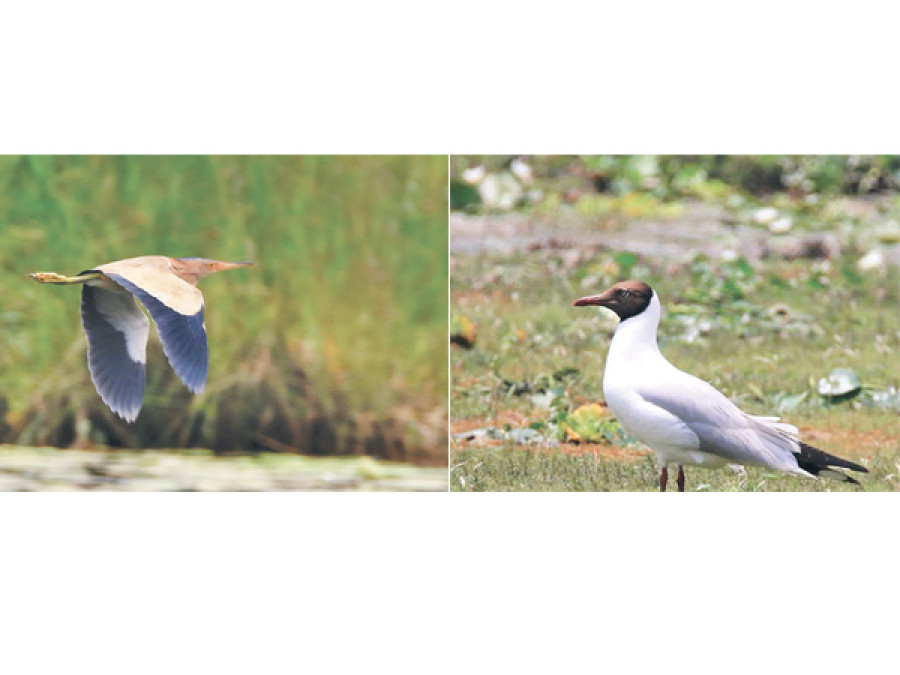National
Tarai bird spotted in Kaski wetland
Birdwatchers have recorded sighting of Yellow bittern (Ixobrychus sinensis), a summer migratory bird species found in Tarai districts, for the first time in wetland areas of Kaski district.
Birdwatchers have recorded sighting of Yellow bittern (Ixobrychus sinensis), a summer migratory bird species found in Tarai districts, for the first time in wetland areas of Kaski district.
The Yellow bittern species from heron family that have been recorded in Tarai plains at an altitude of 250 meters above sea level so far were sighted for the first time in the hill district at an altitude of 900 meters near Khaste and Neureni lake area. These bird species are 38 centimeter long with a black cap and tail and long thin bill.
Birdwatchers, who have been monitoring the status of birds in Kaski district since 1998, said this is the first time the Yellow bittern has been sighted in the area, said Manshant Ghimire, who recorded the sighting of the bird this month.
“This (Yellow bittern) is normally found in Tarai areas,” said Hem Sagar Baral, a senior ornithologist. “The bird sighting in higher altitudes is an interesting area for further research and find how climate change is shifting the migration trend and habitats of birds,” he added.
Recently, Phewa Lake in Pokhara recorded the presence of Brown-headed Gull that normally lives at sea level. Last year’s bird count in various lakes in Pokhara recorded presence of 72 water bird species. In the recent years, ornithologists have expressed concerns over the risks on various bird species due to changing climatic conditions. Besides degradation and loss of habitats, poaching and hunting and use of pesticides, the changing climatic scenario is posing new challenges affecting the breeding period, growth and migration of both summer and winter birds, Baral said.
A study led by Durham University and BirdLife International in 2013 showed that many birds species are likely to suffer under future climate change with projections showing that at least 45 percent and possibly up to 88 percent of the 370 species studied will experience decline in suitable climate, leading to changing species composition at individual sites.




 18.12°C Kathmandu
18.12°C Kathmandu














